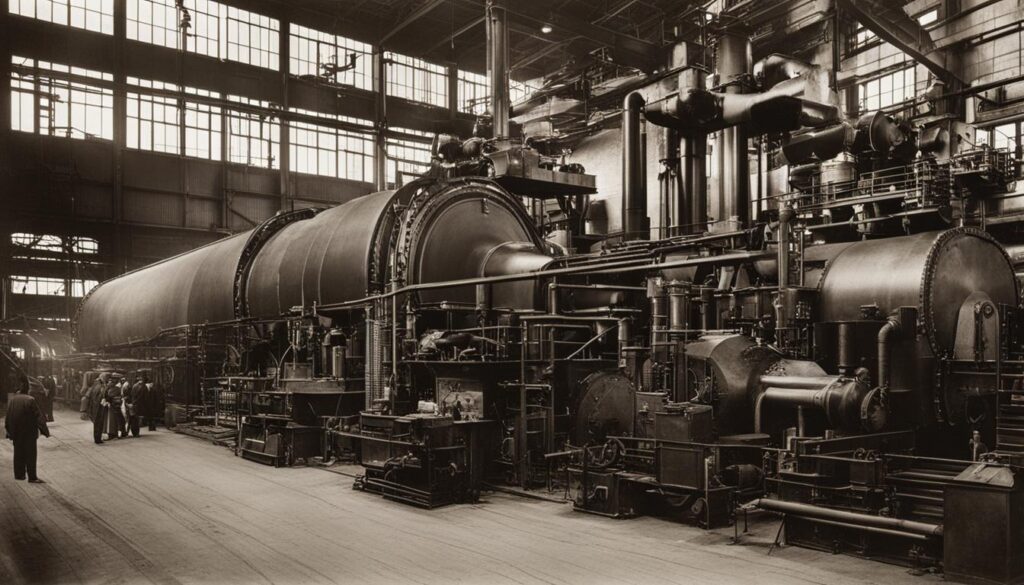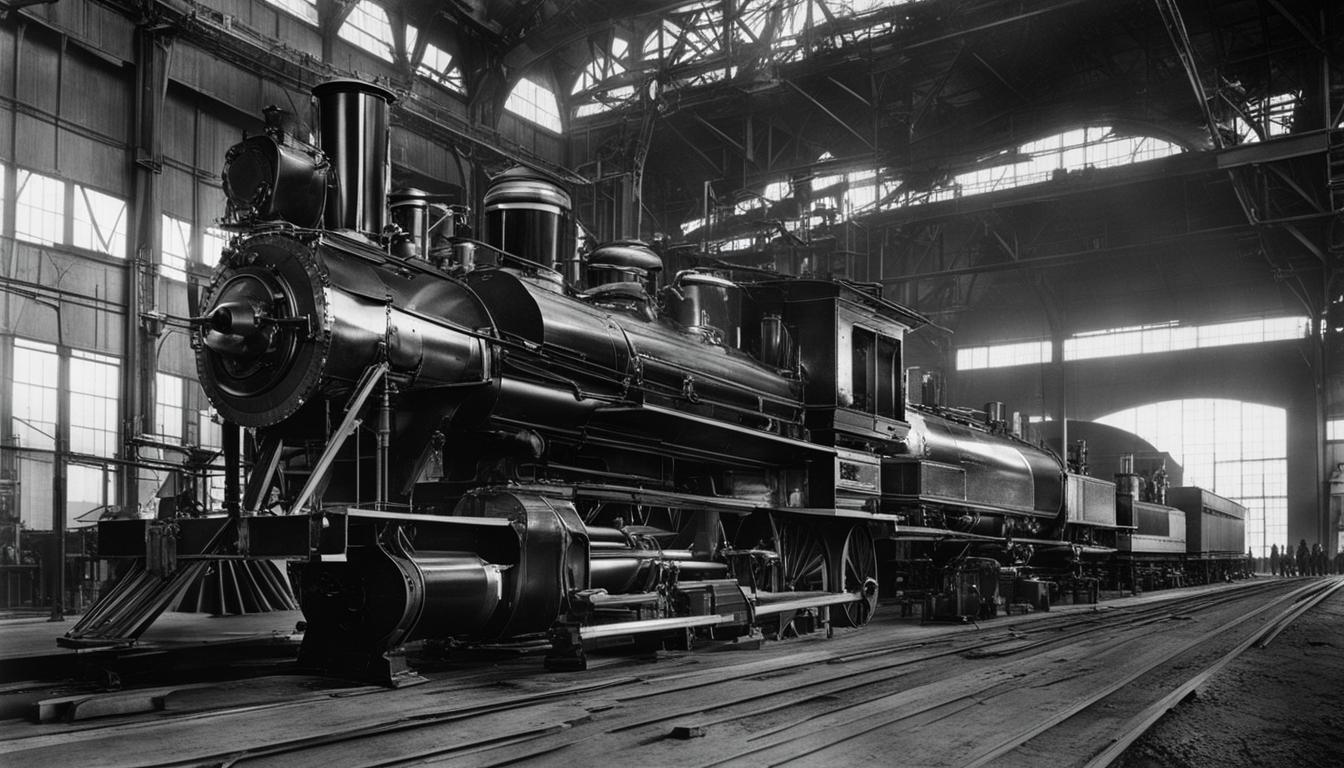Welcome to our latest article on the impact of industrial technology on sectionalism in the United States. Over the years, industrialization has played a crucial role in shaping the dynamics of sectionalism, influencing various aspects of society and the economy.
From the rise of the industrial core to the regional divisions, industrial technology has left an indelible mark on the nation’s history.
As scholars like Richard Franklin Bensel have highlighted, the relationship between democracy, economic development, and sectional antagonisms provides valuable insights into how industrialization impacted sectionalism. Understanding this connection is essential to grasp the evolution of the United States as a nation.
Contents
- 1 The Influence of Political Economy on Sectionalism
- 2 Technological Advancements and Regional Divisions
- 3 Conclusion
- 4 FAQ
- 4.1 How did industrial technology impact sectionalism in the United States?
- 4.2 What was the influence of political economy on sectionalism?
- 4.3 How did technological advancements contribute to regional divisions?
- 4.4 What social changes and cultural identity were influenced by industrialization?
- 4.5 How did industrial technology impact sectionalism in the United States?
- 5 Source Links
Key Takeaways:
- Industrial technology played a significant role in shaping sectionalism dynamics in the United States.
- Richard Franklin Bensel’s research sheds light on the relationship between industrialization and sectional antagonisms.
- The rise of the industrial core and the persistence of core-periphery dynamics are key factors influenced by industrial technology.
- Regional divisions were intensified due to technological advancements and the reliance on slave labor in the South for cotton production.
- The rapid shift from an agricultural to an industrial economy greatly influenced social changes and cultural identity.
The Influence of Political Economy on Sectionalism
The political economy of the United States played a crucial role in the development and perpetuation of sectionalism. During the industrialization period, the Republican Party formed a developmental coalition that was instrumental in driving rapid industrial growth in the country.
This coalition aimed to create a national “home market” characterized by economic inequality, which had significant implications for sectional tensions.
The Republican Party’s approach to political economy relied on a tariff complex that brought together different interests across the Northern regions.
Also read: Revolutionizing Cars: Technological Advances Await
Despite conflicts over monetary policy, labor rights, and corporate regulation, this coalition maintained unity and coherence. However, these economic policies ultimately contributed to the sectional tensions between the industrial core and traditionally agrarian regions.
“The Republican Party’s developmental coalition was a response to the industrialization period and the need to foster economic growth. While this coalition brought together diverse interests, it also exacerbated the divide between industrial and agrarian regions.”
By prioritizing industrial growth and promoting the interests of the industrial core, the Republican Party’s policies further deepened the divide between different regions of the United States.
The industrial core, with its factories and urban areas concentration, experienced significant economic growth and urbanization. In contrast, rural regions, which relied heavily on agriculture, felt marginalized and overlooked.
This divide between the industrial core and rural regions profoundly affected sectionalism. It not only shaped the economic landscape of the country but also influenced political loyalties and identity formation.
The economic policies pursued during industrialization played a central role in defining the interests and aspirations of different regions, fueling sectional tensions and exacerbating existing divisions.
Understanding the influence of the political economy on sectionalism is crucial for comprehending the complexities of the United States’ history and the socio-economic dynamics that continue to shape the nation today.
Also read: Exploring Technologies That Simulate Higher-Order Thinking
Table: Tariff Complex and Regional Interests
| Tariff Complex | Regional Interests |
|---|---|
| Northern industrial regions | She supported protectionist policies to safeguard domestic industries and promote economic growth. |
| Southern agrarian regions | Opposed high tariffs as they increased the cost of imported goods, including manufacturing equipment, and impacted the export of agricultural products. |
| Western regions | Varied interests depended on the specific region, as some areas aligned with the industrial core, while others prioritized agrarian concerns. |
Technological Advancements and Regional Divisions
The technological advancements that accompanied the Industrial Revolution in the United States significantly impacted regional divisions.
The introduction of power-driven machines in manufacturing revolutionized the production process, enabling factories to reach new levels of efficiency and productivity.
This expansion of manufacturing capabilities positioned the United States as the second-largest manufacturing power by 1860, trailing only behind Great Britain.
One of the key consequences of these technological advancements was the increased availability of affordable goods. The mass production of books, color prints, and other factory-produced items connected rural and urban areas, contributing to a shared national culture.
The dissemination of these cultural artifacts helped to bridge the gap between different regions and fostered a sense of common identity among Americans.
However, technological advancements also deepened the divide between the North and the South. While the North embraced industrialization and its associated technologies, the Southern economy heavily relied on slave labor for cotton production, which fueled the industrial growth in the North and Great Britain.
This reliance on slave labor created a stark contrast between the two regions and exacerbated existing sectional tensions.
“The technological advancements of the industrial revolution played a dual role in shaping the United States. While they fostered an interconnectedness between rural and urban areas, they also highlighted the stark divide between the North and the South, ultimately contributing to the sectionalism of the era.” – [Author’s Name]
This image showcases a glimpse into the technological advancements of the era:

Conclusion
Industrial technology has had a significant impact on sectionalism in the United States. The rise of the industrial core, fueled by technological advancements, intensified regional divisions and shaped the political and economic landscape of the nation.
The formation of policies and coalitions during the industrialization period further influenced the dynamics of sectionalism.
Moreover, the social and cultural changes brought about by industrial technology played a crucial role in shaping sectionalism. The influx of immigrants, such as the Irish and Germans, contributed to the labor force and influenced the industrialization process.
This cultural interaction and the development of ideologies that emphasized the divide between private and public spheres further deepened sectionalism.
Understanding the impact of industrial technology on sectionalism is vital for gaining insights into the evolution of the United States as a nation.
By recognizing the economic, political, and social factors, we can appreciate the complexities that shaped sectionalism and the transformative power of industrial technology.
FAQ
How did industrial technology impact sectionalism in the United States?
Industrial technology played a significant role in shaping the dynamics of sectionalism in the United States. It contributed to the rise of the industrial core, intensified regional divisions, and shaped the political and economic landscape. The impact of industrial technology on sectionalism can be seen through various factors, such as the influence of political economy, technological advancements, social changes, and cultural identity.
What was the influence of political economy on sectionalism?
The Republican Party’s developmental coalition, formed during industrialization, facilitated rapid industrial growth and the creation of a national “home market” characterized by economic inequality. These economic policies contributed to the sectional tensions between the industrial core and traditionally agrarian regions. The political economy of the United States played a crucial role in sectionalism, as conflicts over monetary policy, labor rights, and corporate regulation emerged.
How did technological advancements contribute to regional divisions?
The introduction of power-driven machines in manufacturing extended the reach of factories to different commodities, making the United States the second-largest manufacturing power by 1860. While these advancements connected rural and urban areas, shaping a shared national culture, they also deepened the divide between the North and the South. The Southern economy heavily relied on slave labor for cotton production, which fueled industrial growth in the North and Great Britain, further polarizing the regions.
The rapid shift from an agricultural to an industrial economy brought significant social changes and influenced cultural identity in the United States. As the population grew, immigrants, particularly Irish and Germans, filled the gaps in the labor force and contributed to the industrialization process. The cultural interaction between different groups and the development of a powerful ideology that emphasized the divide between private and public spheres shaped sectionalism and the idealization of the domestic sphere as a haven against the forces of capitalism.
How did industrial technology impact sectionalism in the United States?
Industrial technology had a profound impact on sectionalism in the United States. It contributed to the rise of the industrial core, intensified regional divisions, and shaped the political and economic landscape. The dynamics of sectionalism were influenced by the policies and coalitions formed during the industrialization period and the social and cultural changes brought about by technological advancements. Understanding the role of industrial technology in sectionalism is crucial for comprehending the evolution of the United States as a nation.




